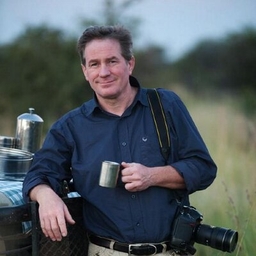
Joel Sartore
Freelance Photographer at National Geographic
National Geographic photographer, speaker, author and conservationist. Founder of the Photo Ark.
Articles
-
1 month ago |
nationalgeographic.fr | Chris Burkard |Joel Sartore |Matt Loewen |Martin Puddy
L'USNS Mercy, le plus grand navire hôpital au monde21 mai 2025Jeremy Jones se bat pour que nos hivers restent froidsComment les chiens de sauvetage retrouvent-ils les survivants d'une catastrophe ?
-
1 month ago |
nationalgeographic.fr | Brian Handwerk |Joel Sartore
Depuis des années maintenant, les chiens de sauvetage sont mobilisés pour aider à trouver des survivants parmi les décombres des sites de catastrophes naturelles ou d’accidents. Les chiens sont en quête d’une respiration humaine, explique Sinead Imbaro, policière et formatrice militaire pour l’unité cynophile de police aux États-Unis, à News Nation. S’ils trouvent quelqu’un, ils aboient pour alerter les secours.
-
1 month ago |
yahoo.com | Joel Sartore
PhotoArkBabies is Joel Sartore's sixth book exploring the marvels of the animal world through his ongoing National Geographic Photo Ark project, a multi-year mission to photograph animals in human care around the world, emphasizing those liable to be lost forever due to species extinction. What is family to a seabird who soars alone over the open ocean, or to a primate who clings to its mother for years? Do animals have siblings, aunties, or cousins? Can they survive without any family at all?
-
1 month ago |
nationalgeographicbrasil.com | Sarah Gibbens |Joel Sartore
Pesquisas sobre substâncias químicas cerebrais e desenvolvimento social sugerem que precisamos repensar nossa definição de maternidade. Na foto, uma mãe segura seu bebê nos braços. Foto de Joël Sartore, Nat Geo Image CollectionPublicado 9 de mai. de 2025, 07:00 BRTNo Dia das Mães, celebrado tradicionalmente no 2º domingo de maio em muitos países, se celebra a maternidade em toda sua plenitude. É também um bom momento para refletir sobre um tema muito recorrente: o suposto “instinto materno”.
-
1 month ago |
nationalgeographic.com | Joel Sartore
PhotoArkBabies is Joel Sartore's sixth book exploring the marvels of the animal world through his ongoing National Geographic Photo Ark project, a multi-year mission to photograph animals in human care around the world, emphasizing those liable to be lost forever due to species extinction. What is family to a seabird who soars alone over the open ocean, or to a primate who clings to its mother for years? Do animals have siblings, aunties, or cousins? Can they survive without any family at all?
Try JournoFinder For Free
Search and contact over 1M+ journalist profiles, browse 100M+ articles, and unlock powerful PR tools.
Start Your 7-Day Free Trial →X (formerly Twitter)
- Followers
- 41K
- Tweets
- 2K
- DMs Open
- No

Meet Chano, a Geoffroy’s cat. In the wild, this nocturnal species can be found navigating through the forests of South America. Within its homerange, this carnivorous cat is an ambush hunter, searching for and stalking prey like small mammals, birds, snakes, and amphibians. https://t.co/ZkwzUtWuEy

The North American river otter is built for life on the water. Thick, protective fur keeps them warm as they navigate chilly waters, short legs and webbed feet make them fast swimmers, and their long, narrow body and flattened head helps to keep their movements streamlined. https://t.co/1slp7HK881

Pileated gibbons like this two-year-old are master brachiators, using their long forearms to swing from tree to tree in their forested homes, sometimes bridging gaps as wide as 30 to 50 feet. When on the ground, gibbons walk bipedally like humans. https://t.co/eE5gdtiToc